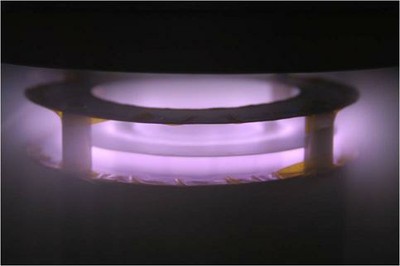Introduction
Plasmas have a range of technological applications in the area of environmental plasma processing. By environmental plasma processing, we refer to the use of a plasma to solve some technological problem associated with the natural environment. In this respect, the subject matter of this aspect of plasma science ranges from environmental hazard mitigation to the use of plasmas to process agricultural by-products to water purification. This subfield typically features atmospheric plasma discharges since the material to be processed exists in our everyday world. This is to be contrasted with most material plasma processing where the plasma processing takes place well below atmospheric pressure. The study of atmospheric plasma discharges and the interaction of such discharges with matter is a key aspect of this effort. Ultimately, the knowledge gained should lead to novel methods of keeping our environment safe as well as provide a better means of utilizing the resources that we have here on earth as well as beyond.
We are actively investigating the physics of the packed bed barrier discharge. This source can be used to process toxic gases produced during the operation of cars and factories. These efficient discharges contain energized electrons that can break up toxic gases before they are emitted into the environment. Plasmas can also be used to treat agricultural precursors such as seeds as well as process agricultural waste products. Rice hulls for example are one such waste product derived from rice processing. Rice hulls are rich in the element silicon. We are actively investigating the use of plasmas for the extraction of photovoltaic grade silicon from rice hulls. Practical implementation of such an approach can drive down the cost of solar arrays.
The leading killer of children in the world is disease brought on by water borne illnesses. Clean drinking water is in many respects a luxury prevalent primarily in the developed countries. Plasma science offers potential solutions to water purification. Already in Europe, plasma derived ozone treatment of water is widespread and has been so for a long time. Here we focus on developing plasma-based technologies that require little infrastructure so that they can be used in resource limited, underdeveloped countries in particular. In this respect, it is desirable to have a portable purification device for point of use purification. The technology can therefore be used on demand at a variety of locations ranging from ponds and streams to rivers. The Laboratory is poised to take a closer look at plasma discharges in water as a means for portable water treatment. Our goal is to understand the physics and chemistry of plasma breakdown in water and to minimize the voltage requirements. Technologies can be developed based on this understanding. Such technologies can potentially significantly reduce the number of deaths associated with water borne disease.
Environmental plasma processing need not be limited to terrestrial applications. It is well known that dust post operational challenges to human operations on the Moon and likely Mars. Dust on these extraterrestrial sites can foul up rotating machinery. Dust carried into habitats can pose a potential health risk. Plasma treatment of dust layers offers a potential solution to mitigation. The Laboratory is presently developing a source to address the dust risk.
Plasma medicine research
http://www.engin.umich.edu/

Plasma chemistry studies for green production of silicon
Fast pulsed discharge research: on the trail to the energy bandits!
Fast, pulsed discharges are one of the few ways by which a low-temperature plasma can be generated at atmospheric pressures. Such plasmas can be used for low-cost processing of temperature-sensitive materials, treatment of contaminated water, and alteration of airfoil aerodynamics. However, these plasmas, which may only exist for billionths of a second, present new experimental and simulation challenges. In our work, we develop the necessary diagnostics to understand how these plasmas change over time, and use the resulting data to evaluate computational studies. One particular important aspect of this work is that of tracking how the energy is transferred to the gas in these discharges…what are the energy transfer mechanisms (energy bandits!).
Plasma water purification research
http://www.youtube.com/watch?

